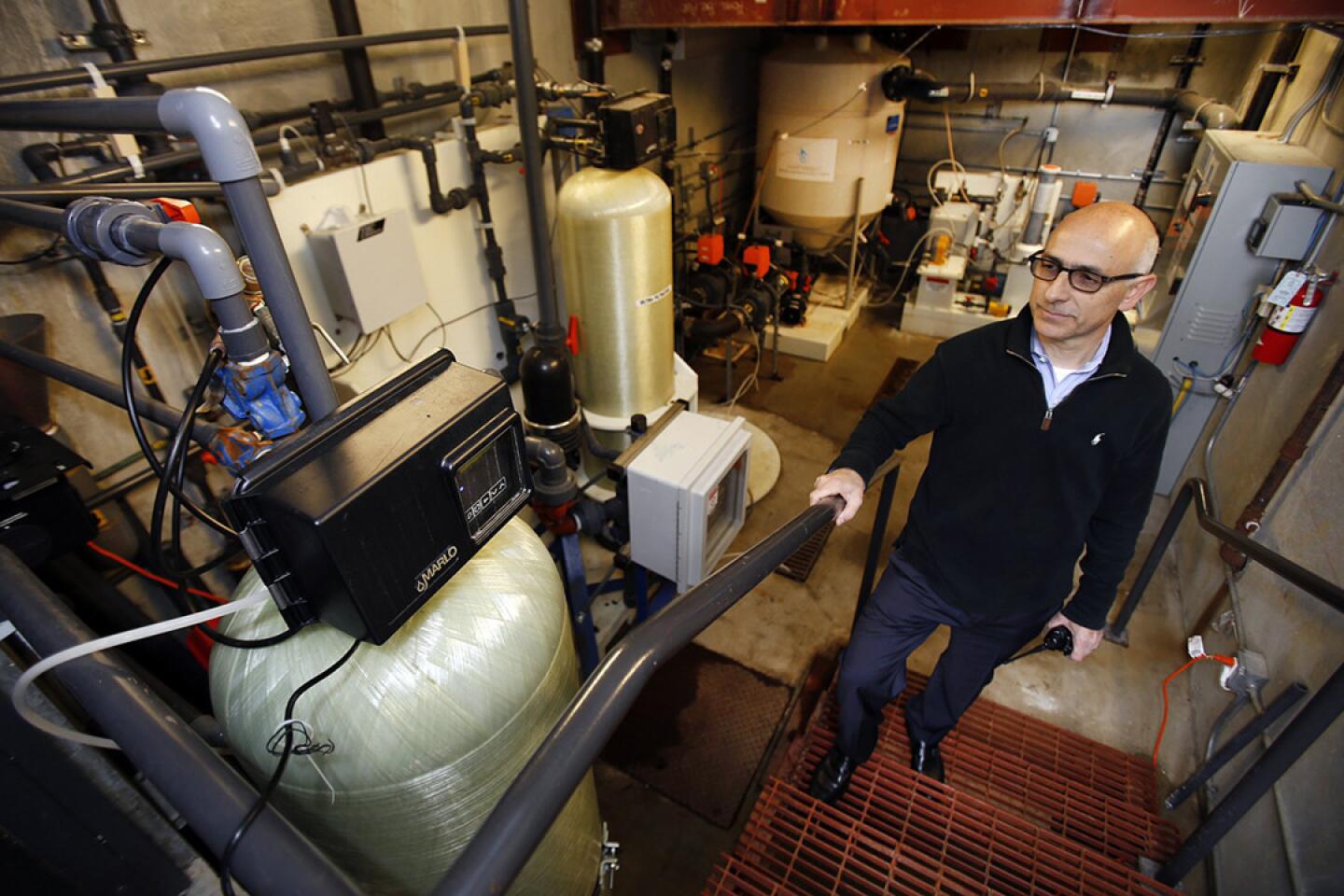More hotels are going green, and not just to save water or money
In the hotel industry, being green sometimes means ripping out the greenery.
The Intercontinental Los Angeles Century City Hotel is removing draping ivy plants from the balconies of all 361 rooms, replacing them with drought-tolerant succulents.
The Courtyard by Marriott in Torrance tore out 900 square feet of turf and flower beds, swapping them for native California grass to help cut water use by 15%.
With California in the worst drought in state history, some hotels have gone beyond simply installing low-flow shower heads and urging guests to reuse towels. The goal is not just to save water or money. It’s about creating an eco-friendly image to appeal to environmentally minded guests.
“It’s not a huge savings,” Steve Choe, general manager of the Intercontinental, said about dumping the ivy planters. “I think it’s about sending the right message.”
Nearly 60% of travelers say they plan to make eco-friendly choices when booking hotels, with half saying they would pay extra to stay at an environmentally friendly hotel, according to a 2012 survey by the travel website TripAdvisor.
An Earth-friendly image is also important because many corporate travel managers insist that their workers stay at hotels that do their part to improve the environment.
The percentage of companies with travel booking policies that either require or recommend that a hotel adopt “sustainability” measures has jumped to 19% in the U.S., up from 11% in 2011, according to a new study by the Global Business Travel Assn., the trade group for the world’s business travel managers.
“The best thing hotels can do is say ‘look at what we are doing’” to help the environment, said Patricia Griffin, founder of the Green Hotels Assn., a Houston-based group that promotes green policies for hotels.
No government agency keeps track of how many hotels have adopted water-saving measures. Still, Griffin and other water experts say low-flow shower heads and other in-room measures are common in hotels because local utilities and government agencies offer rebates for water-saving equipment.
Bathrooms are the biggest drain, accounting for about 30% of hotel water use, followed by landscaping and laundry, each with 16%, and kitchens with 14%, according to the Environmental Protection Agency. Typical water-saving measures can reduce operating costs at hotels by as much 11%, the EPA estimates.
For even greater water savings — and to promote an eco-friendly image — some hotels are getting creative.
The Bacara Resort & Spa in Santa Barbara drained its decorative fountains and planted succulents and agave plants in a large fountain near the entrance.
The water saved from the drained fountains was “insignificant,” but it sent a message about the hotel’s environmental efforts, said Kathleen Corchran, the hotel’s general manager.
When the Bacara posted a photo of the agave-filled fountain on Facebook, it got a mixed reaction from guests, with some declaring the fountain “beautiful” and others saying “Put the water back” and “Sorry you made the change.”
The Intercontinental Hotels Group plans next year to give all 4,700 of its hotels access to an online tool that lets managers track how much energy and water they are using.
The group hopes to use the system to cut water use by 12% over the next three years in water-starved areas like California.
During a multimillion-dollar renovation three years ago, the Hotel Bel-Air in Los Angeles installed a filtering system to reuse bathroom water from a dozen hotel suites to irrigate its 12 acres of gardens.
The Loews Santa Monica Beach Hotel plans to install a system to recycle about 70% of the water used for its laundry operation. The project, which is expected to be installed by mid-December, will cost about $96,000, after water and gas rebates, according to hotel officials.
Hotel officials expect the investment will pay for itself in 17 months.
The Courtyard hotel in Torrance did not replace 900 square feet of grass and flower beds with dry riverbed landscaping to save money, said David Zimmerman, the hotel’s general manager. “It seemed like the responsible thing to do today, and I think the guests see that we are being responsible.”
Other hotels have been motivated to improve their image and avoid fines.
The Montecito Water District in Santa Barbara declared a water emergency in February and adopted penalties to force residents and businesses to cut overall water use by 30%
The Biltmore Four Seasons in Santa Barbara, on 20 acres of beachfront land, began to impose several water-saving measures after the emergency was declared but was still fined $48,000 for using about 1 million gallons more than its monthly allotment in April.
Since then, hotel officials say they have avoided additional fines by putting an end to washing down sidewalks and parking lots, installing low-flow shower heads and limiting landscape irrigation to evening hours, among other water-saving measures.
More to Read
Inside the business of entertainment
The Wide Shot brings you news, analysis and insights on everything from streaming wars to production — and what it all means for the future.
You may occasionally receive promotional content from the Los Angeles Times.


















